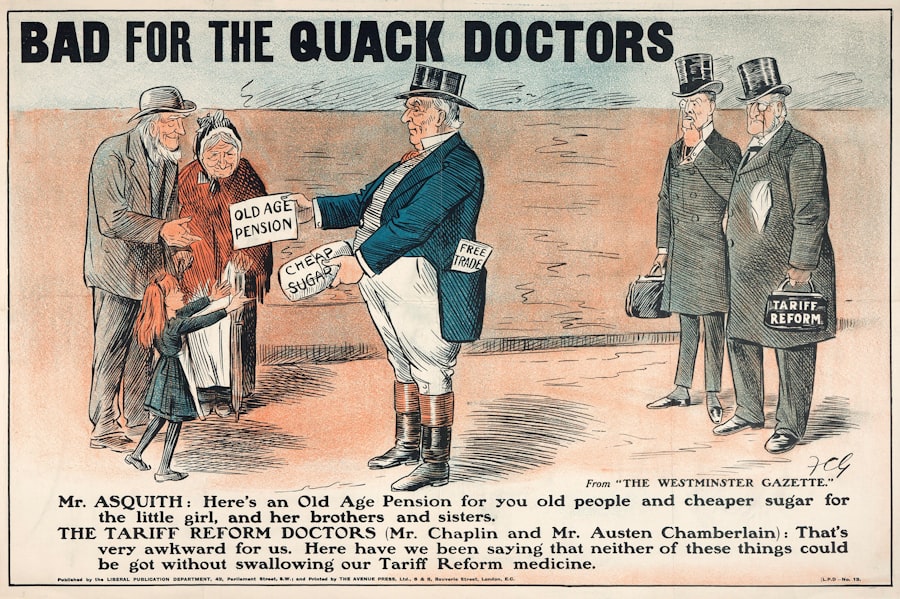In the realm of healthcare marketing, a profound understanding of the target audience is paramount. Healthcare providers must recognize that their audience is not monolithic; it comprises diverse demographics, including patients of varying ages, backgrounds, and health conditions. For instance, a pediatric clinic will have a different target audience compared to a geriatric care facility.
The former will focus on parents and guardians seeking the best care for their children, while the latter will cater to adult children or caregivers looking for services for elderly relatives. This nuanced understanding allows healthcare marketers to tailor their messaging and services to meet the specific needs and concerns of each segment. Moreover, understanding the target audience extends beyond demographics to encompass psychographics—values, beliefs, and behaviors that influence healthcare decisions.
For example, millennials may prioritize convenience and digital access to healthcare services, while baby boomers might value personal interaction and trust in their healthcare providers. By conducting thorough market research, including surveys and focus groups, healthcare organizations can gain insights into patient preferences and pain points. This information is invaluable for crafting targeted marketing strategies that resonate with potential patients, ultimately leading to increased engagement and patient acquisition.
Key Takeaways
- Identify and understand the specific needs and preferences of your target audience for effective marketing.
- Use digital marketing strategies, including SEO and social media, to increase online visibility and engagement.
- Collaborate with influential medical professionals to build credibility and reach a wider audience.
- Employ data analysis to create targeted advertising campaigns that maximize ROI.
- Combine email marketing with traditional advertising methods to create a comprehensive promotional approach.
Utilizing Digital Marketing Strategies
Digital marketing has revolutionized how healthcare organizations connect with patients. The shift towards online platforms has made it essential for healthcare providers to adopt comprehensive digital marketing strategies. One effective approach is the development of user-friendly websites that serve as informative hubs for potential patients.
These websites should not only provide essential information about services offered but also include educational content such as blog posts, videos, and FAQs that address common health concerns. By positioning themselves as trusted sources of information, healthcare providers can build credibility and foster patient loyalty. In addition to a robust website, healthcare organizations can leverage pay-per-click (PPC) advertising to enhance their online visibility.
PPC campaigns allow providers to target specific keywords related to their services, ensuring that their ads appear prominently in search engine results when potential patients are actively seeking care. For example, a dental practice might use PPC ads targeting phrases like “emergency dental care” or “cosmetic dentistry near me.” This targeted approach not only drives traffic to the website but also increases the likelihood of converting visitors into patients by addressing their immediate needs.
Leveraging Social Media Platforms

Social media platforms have emerged as powerful tools for healthcare marketing, enabling providers to engage with their audience in real-time. By establishing a presence on platforms such as Facebook, Instagram, and Twitter, healthcare organizations can share valuable content, promote services, and interact with patients directly. For instance, a hospital might use Instagram to showcase patient success stories or highlight community health initiatives, fostering a sense of connection and trust among followers.
Engaging content that resonates with the audience can lead to increased shares and interactions, amplifying the organization’s reach. Furthermore, social media offers an opportunity for healthcare providers to address common misconceptions and provide accurate health information. By creating informative posts or hosting live Q&A sessions, organizations can position themselves as thought leaders in their field.
For example, during flu season, a healthcare provider might run a campaign on Facebook discussing the importance of vaccination, dispelling myths surrounding flu shots, and encouraging followers to schedule appointments. This proactive approach not only educates the community but also drives patient engagement and reinforces the provider’s commitment to public health.
Incorporating Search Engine Optimization
| SEO Metric | Description | Typical Range | Importance |
|---|---|---|---|
| Organic Traffic | Number of visitors coming from search engines | 100 – 100,000+ visits/month | High |
| Keyword Rankings | Position of targeted keywords in search engine results | 1 – 100 | High |
| Click-Through Rate (CTR) | Percentage of users who click on your link after seeing it in search results | 2% – 30% | Medium |
| Bounce Rate | Percentage of visitors who leave after viewing only one page | 20% – 70% | Medium |
| Page Load Time | Time it takes for a page to fully load | 1 – 5 seconds | High |
| Backlinks | Number of external links pointing to your website | 10 – 10,000+ | High |
| Domain Authority (DA) | Score predicting how well a website will rank on search engines (0-100) | 10 – 90 | High |
| Mobile Usability | Percentage of pages optimized for mobile devices | 70% – 100% | High |
| Content Freshness | Frequency of content updates or new content published | Weekly to Monthly | Medium |
Search Engine Optimization (SEO) is a critical component of any digital marketing strategy in healthcare. By optimizing their online content for search engines, healthcare organizations can improve their visibility and attract more potential patients. Effective SEO involves keyword research to identify terms that prospective patients are using when searching for medical services.
For instance, a cardiology clinic might focus on keywords like “heart health tips” or “cardiologist near me.” By incorporating these keywords into website content, blog posts, and meta descriptions, organizations can enhance their chances of ranking higher in search engine results. In addition to keyword optimization, local SEO is particularly important for healthcare providers. Many patients search for services within their geographic area, making it essential for organizations to optimize their online presence for local searches.
This includes creating and maintaining a Google My Business profile, ensuring that contact information is accurate and up-to-date, and encouraging satisfied patients to leave positive reviews. A strong local SEO strategy not only increases visibility but also builds trust within the community, as potential patients are more likely to choose providers with positive online reputations.
Partnering with Influential Medical Professionals
Collaborating with influential medical professionals can significantly enhance a healthcare organization’s credibility and reach. These partnerships can take various forms, from co-hosting educational seminars to featuring guest blog posts on each other’s platforms. For instance, a wellness center might partner with a well-known nutritionist to offer workshops on healthy eating habits.
Such collaborations not only provide valuable content for patients but also tap into the established audiences of the partnered professionals. Moreover, leveraging the influence of medical professionals on social media can amplify marketing efforts. When a respected physician shares information about a healthcare service or initiative on their platform, it carries weight and can lead to increased interest from potential patients.
For example, if a renowned orthopedic surgeon posts about a new minimally invasive surgery technique on Twitter or Instagram, it can generate buzz and encourage individuals experiencing joint pain to seek consultation at the associated clinic. These partnerships create a win-win scenario where both parties benefit from increased visibility and enhanced patient trust.
Utilizing Data Analysis for Targeted Advertising

Data analysis plays a pivotal role in refining marketing strategies within the healthcare sector. By harnessing data analytics tools, organizations can gain insights into patient behavior, preferences, and demographics. This information allows for more targeted advertising efforts that resonate with specific segments of the audience.
For instance, if data reveals that a significant portion of patients seeking mental health services are young adults aged 18-24, marketing campaigns can be tailored to address their unique concerns and preferences. Additionally, data analysis enables healthcare providers to track the effectiveness of their marketing campaigns in real-time. By monitoring key performance indicators (KPIs) such as click-through rates, conversion rates, and patient acquisition costs, organizations can make informed decisions about where to allocate resources for maximum impact.
For example, if an email campaign promoting a new service yields high engagement but low conversion rates, it may indicate that adjustments are needed in the messaging or call-to-action. This iterative approach ensures that marketing efforts remain agile and responsive to changing patient needs.
Implementing Email Marketing Campaigns
Email marketing remains one of the most effective channels for engaging with patients and nurturing relationships over time. Healthcare organizations can utilize email campaigns to provide valuable information about services, health tips, and upcoming events while also promoting patient engagement initiatives such as wellness programs or screenings. For instance, a family practice might send out monthly newsletters featuring articles on seasonal health concerns—like allergy management in spring or flu prevention in winter—alongside reminders for annual check-ups.
Personalization is key in email marketing; tailoring messages based on patient preferences or past interactions can significantly enhance engagement rates. For example, if a patient has previously expressed interest in weight management programs, sending targeted emails with relevant resources or upcoming workshops can foster a sense of connection and encourage participation. Additionally, automated email reminders for appointments or follow-up care can improve patient adherence to treatment plans while reducing no-show rates.
Utilizing Traditional Advertising Methods
While digital marketing has gained prominence in recent years, traditional advertising methods still hold value in the healthcare sector. Print advertisements in local newspapers or magazines can effectively reach specific demographics that may not be as active online. For instance, an advertisement promoting a new maternity ward in a local parenting magazine can directly target expectant parents in the community.
Moreover, community outreach through events such as health fairs or free screening days provides an opportunity for direct engagement with potential patients. Setting up booths at local events allows healthcare providers to showcase their services while offering valuable health information and resources. For example, a cardiology clinic might host a booth at a community health fair where they provide free blood pressure screenings and educational materials on heart health.
Such initiatives not only promote awareness of available services but also foster trust within the community by demonstrating a commitment to public health. In conclusion, while digital strategies dominate modern marketing efforts in healthcare, traditional methods still play an essential role in reaching diverse audiences effectively. By integrating both approaches into a comprehensive marketing strategy, healthcare organizations can maximize their outreach efforts and ultimately improve patient engagement and care outcomes.



